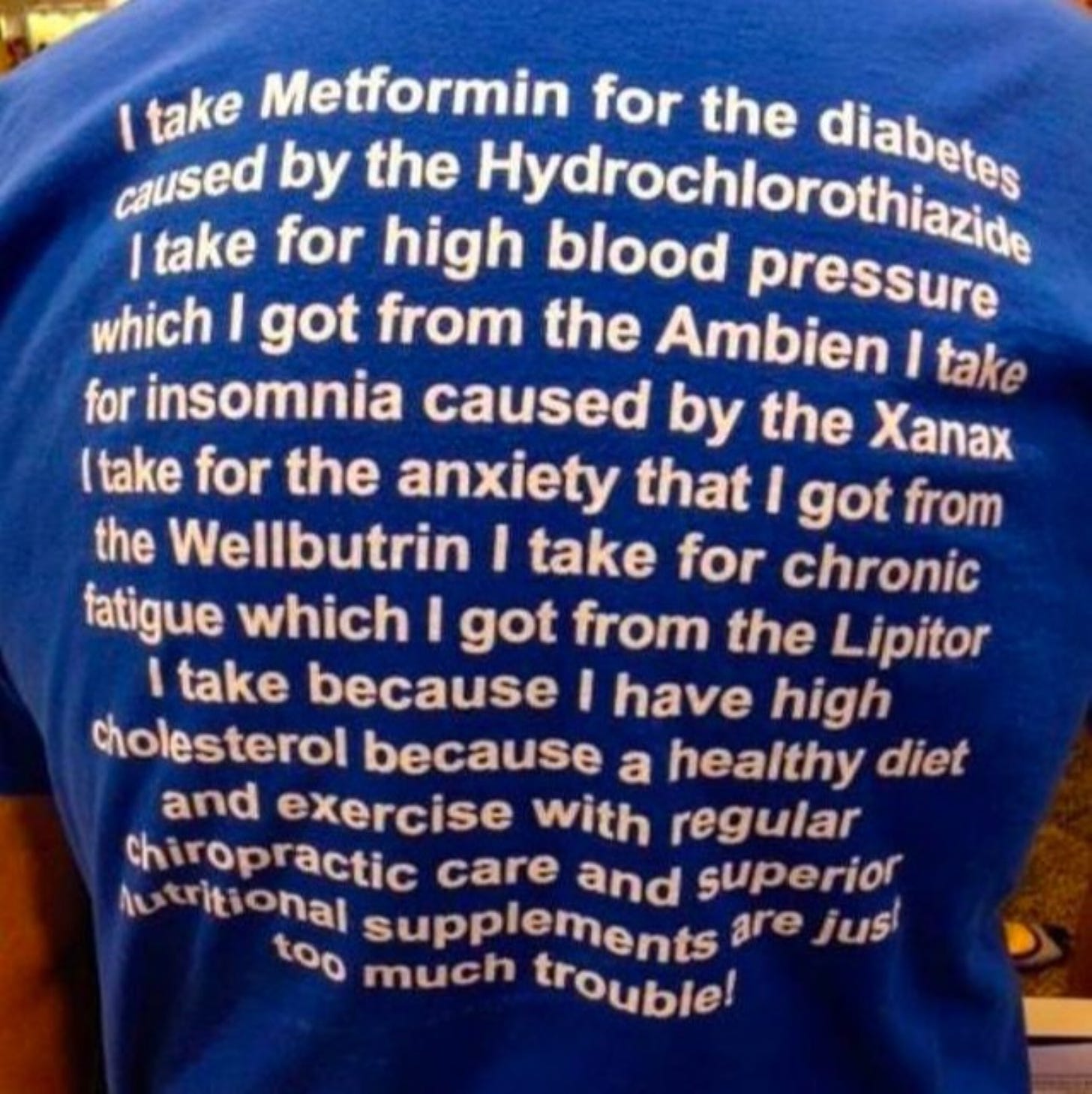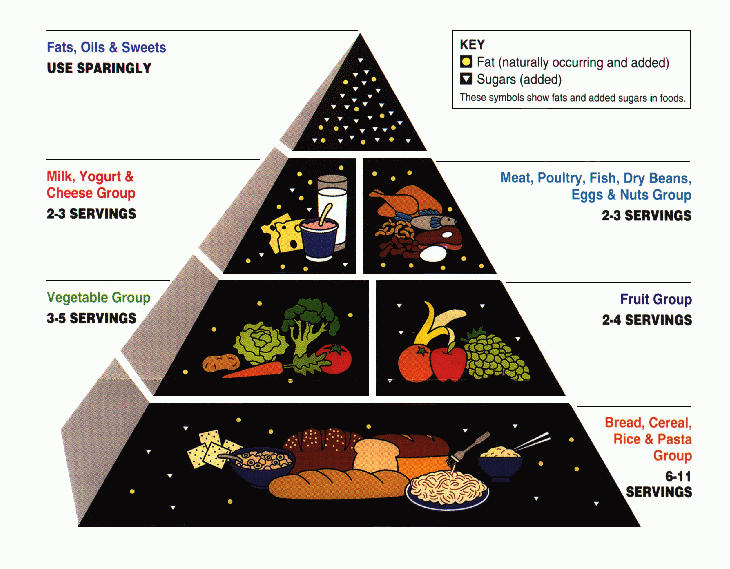“What do all fat, sick, unhealthy people have in common? At least this: they all eat.”
Jordan Peterson at the American Health & Nutrition: A Second Opinion roundtable held at the U.S. Senate on September 23, 2024
I have been staring at a blinking cursor and a blank page for far too long, unsure of how to begin an issue about diet. Because of my work in the performance nutrition space—49ers linebacker Fred Warner and defensive tackle Kevin Givens are my two main clients—people ask me about diet all the time. They ask me about collagen, creatine, and keto. They want to know how to drop their belly fat and why I think they should stop eating oatmeal. They bitch about how their kid will only eat processed food and scratch their head over why Weight Watchers didn’t stick. They tell me about some health scare and ask me what to do about it.
And then they immediately reject whatever I say.
Just a few days ago, someone asked me about sugar and seed oils (canola, sunflower, soy, grapeseed, cottonseed, corn, vegetable, etc.) I gave a quick answer, which boiled down to:
- The three main types of sugar are sucrose, fructose, and glucose. Our body runs on glucose and when we don’t eat it in its pure form, our body converts most of what we eat into glucose. Therefore, sugar in and of itself isn’t “bad” but it is a tool that can be misused. The metabolic issues typically associated with sugar—like insulin resistance and diabetes—aren’t caused by sugar itself. Rather, they are symptoms of a bigger issue. Metabolically healthy people generally have no issue with sugar in reasonable quantities that align with their physical output.
- Seed oils are high in linoleic acid, an 18-carbon, omega-6 polyunsaturated fatty acid. Our body needs some linoleic acid to function, but the shift from animal/saturated fats in the early 1900s to polyunsaturated fats as the primary form of fat in American diets has led to a huge omega-6/omega-3 imbalance as well as excess linoleic acid levels in humans, which seems to contribute to chronic disease.
The response, to the question this person took the time to ask?
“Fuck it, I guess I’m just going to get cancer.”
What the hell am I supposed to do with that? Why bother getting worked up if you’re not going to make change? Why waste my time? Why waste your time? What do you need that I can’t seem to give you?
This is why I rarely talk about diet or diet philosophy. It’s not enough that I spend as much of my time in the world of performance nutrition as I do in the world of psychiatric drug withdrawal. It’s not enough that I feed some of the world’s best athletes. It’s not enough that I put these strategies into practice and prove it works by learning stupid human tricks like standing backflips and bench-pressing my body weight for reps while maintaining a bloodwork panel that makes my doctors ask me what in the hell I’m doing to get such remarkable numbers.
Lest you think I’m fishing for kudos, I assure you it wasn’t always this way. I may have higher than average kinesthetic awareness but when I started down this road in my late 20s, I was eating tons of processed food, drinking way more than I should, taking a handful of prescription drugs every morning, carrying extra squish, couldn’t do a single pull-up or run a mile, and generally felt like shit.
All that changed when I was forced to change what I put in my mouth.
In 2021, five years after taking my last antidepressant, I was still struggling horribly with gut health. It was so bad I didn’t want to be around anyone, and none of my interventions seemed to help. First, I cut eggs. When that didn’t work, I cut gluten. When that failed, I cut dairy. I tried celery juice, fennel tea, and peppermint capsules given to me by a gastroenterology nurse practitioner whose only other suggestion was to “get a colonoscopy.” I added and subtracted psyllium husk, went vegan when possible, and cut coffee for a year. Nothing helped.
Finally, I called Andy Galpin, PhD, an old friend who agreed to let me run through a performance program designed for elite athletes. Over the course of a month, we measured and tested everything that came out of me: blood, spit, urine, hair, stool.
For the first time in my life, I had a comprehensive picture of what was happening in my body. Turns out my gut was boasting a staph infection, strep infection, h. pylori, and giardia—none of which would have shown up in colonoscopy results. An MRT blood test also showed I had a severe intolerance to both gluten and dairy, which would explain why cutting one or the other never worked. I was prescribed a crapton of supplements to deal with the infections and put on a strict diet of eggs, oatmeal (more coming on this), chicken breast, meat, white rice, carrots, broccoli, and macadamia nuts. The diet was brutal, but it worked. My gut symptoms cleared up, my sleep improved, I stopped needing a nap at 3pm, and the black circles under my eyes went away. For the first time in my adult life, I could honestly report that I felt good.
Still, I didn’t understand why this made such a difference when I thought I’d been doing everything “right” for so long. Thus began an extension of my obsession with food, this time focusing on performance nutrition and how it intersects with athletics and psychiatric drug withdrawal and recovery.
Just like how I do not hold an MD or PhD and still manage to be an influential figure in the psychiatric withdrawal space (check out my recent lecture at Grand Rounds at the University of Nevada, Reno Medical School), I do not hold a degree in nutrition or dietetics. But to paraphrase something someone recently told me, “What made John Wooden qualified to coach basketball? He didn’t get a degree in coaching, but he put in the work and immersed himself in the knowledge to become the best coach of all time. This is what good teachers do. They gather the work of others and present it in a digestible way.”
So, over the next few issues, I am going to tackle the world of diet as seen through the lens of what I’ve learned. Apologies in advance for my curt tone on the matter. What I want to do is just tell you what to eat followed by a diatribe culminating in “Quit your bitching and either do it or shut up about it.”
Alas, that is not how humans work. So I am going to try a different strategy: explaining why.

When it comes to diet, I know three things for sure:
- Your emotional, psychological, and physical issues are deeply connected to what you put in your mouth.
- One nutrition strategy may not fit all, but one nutrition strategy does fit most. Outliers are just that—outliers.
- The playbook of Big Pharma and Big Food is shockingly similar and often intertwined. Do not underestimate the role that these industries are playing in your everyday choices.
We are going to dive into all three of these topics, and I will provide as much research and guidance as possible. I hope, by the end of however long this ends up being, we will have changed the lens with which you view food and cooking.
It is going to take time to compile all this, so bear with me if it comes in spurts. In the meantime, I suggest listening to literally any part of the American Health & Nutrition: A Second Opinion round table that happened at the U.S. Senate on September 23, 2024. A few quotes from the stream:
“While gen x, millenials, and gen z have our problems, 75% of us are not stupid, weak or lazy. So hopefully you are wondering what has happened to us.”- @JillianMichaels
“We are mass poisoning all of our children, and all of our adults.” – Robert F. Kennedy Jr.
“Treating chronic disease, which we now know is caused by the environment and our diet, without looking at diet as the treatment, should be considered malpractice.”- @MikhailaFuller“
“We could replace that miserable future with something much brighter and healthier if we had the moral and political will to do so.” – @jordanbpeterson
“This is why America is facing an obesity epidemic. That’s not about will power. It’s about the food system.”- @maxlugavere
“Life expectancy has not increased in the last 100 years. We spend 90-95% of all medical spending on chronic issues, and it’s done nothing.”- @calleymeans
“… who are the constituents of the American government? Is it industry or is it the American people?”- @ChrisPalmerMD
“If the current trends continue… At best, we’re going to face profound societal instability and decreased American competitiveness, and at worst, we’re going to be looking at a genocidal level health collapse…” – @CaseyMeansMD
“Our healthcare system is playing Whac-A-Mole on the backend and we are not talking about the root causes.” – @MartyMakary
“How is it that Americans are so chronically ill despite spending more on healthcare than any other nation. … the focus has shifted away from patient care, to corporate gain.” – Brigham Buhler
“Ultra-processed foods are the new cigarette for my generation.”- @travelingenes
“Over the last 60 years, almost all food additives were being created for one sole purpose. To improve the bottom line of the food industry, and not improve our health.” – @thefoodbabe
“So, of course, Kellogg and other food companies will argue children prefer [bright, artificial colors] over [natural, less bright colors]. Just as they would prefer cocaine over sugar. That doesn’t make it okay.” – @humankarp
More articles from the blog
see all articles
July 9, 2025
How World War II, cigarette companies, and an obscure 1937 law determine what you put in your mouth today: A Short History of the Sad, Modern American Diet.
read the article
June 25, 2025
Bad Medicine, Antidepressant Withdrawal, and the Incalculable Costs of Medicating Normal: My full talk at the University of Nevada, Reno Medical School
read the article
June 18, 2025
Smart things other people said, Part II: A big two weeks in the world of bad science, bad journalism, and why it’s good news for us.
read the article
June 11, 2025




















